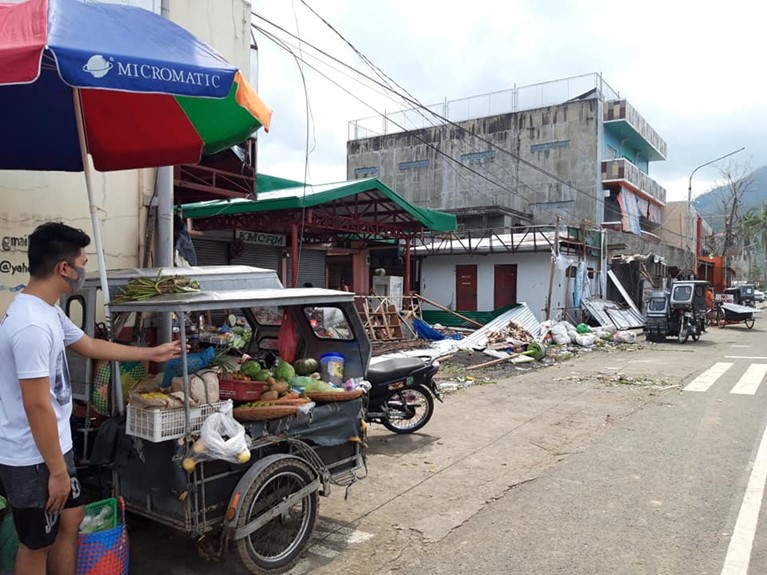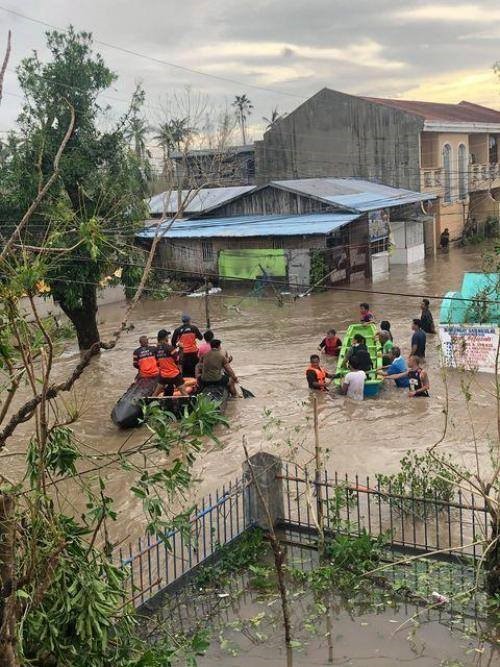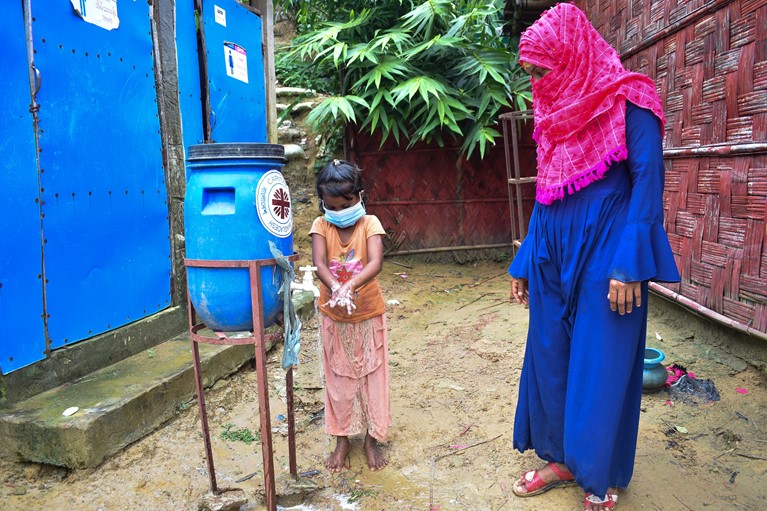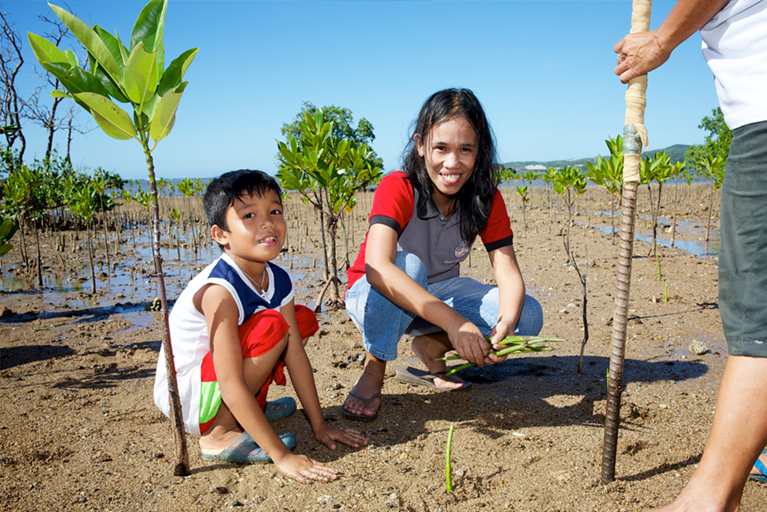Emergencies: our programs provide urgent relief
When a crisis strikes, our local partner organisations on the ground are able to respond quickly to provide emergency assistance to communities impacted by natural disasters, like cyclones, floods and earthquakes, as well as protracted crises, like refugee displacement.
Caritas emergency response programs
Our emergency response programs provide urgent relief to communities affected by a crisis, through the distribution of food, clean water, shelter, hygiene kits and other emergency supplies.
Our development programs are longer-term programs, which involve working with local communities to develop the resources, knowledge and skills to tackle future disasters. This includes Disaster Risk Reduction (DRR) activities that help to build the resilience of communities so that they can plan for the future and minimise the damage of natural disasters.
Global impact of emergencies and humanitarian crises
91%
of storm-related fatalities were recorded in low- or middle-income countries between 1998-2018.
192%
In the past 30 years, the number of people living in cyclone-prone areas has increased by 192%.
2011-2020
The period 2011-2020 was the warmest decade on record.
1 in 5
Nearly one in five people affected by a humanitarian crisis will experience depression, anxiety, post-traumatic stress disorder and other mental illnesses.
Natural disasters and extreme poverty
Natural disasters can cause widespread devastation to communities already dealing with the challenges of extreme poverty. People who live in communities with poor infrastructure and inadequate health care are particularly vulnerable to natural disasters. Between 1998-2018, 91% of storm-related fatalities were recorded in low- or middle-income countries.
In the immediate aftermath of a disaster, people without access to clean water may risk contracting waterborne diseases. Mass hospitalisations can also put enormous strain on a country’s health system, leaving vulnerable communities without access to essential health care.

Many people who experience extreme poverty live in areas that are prone to natural disasters. In the past 30 years, the number of people living in cyclone-prone areas has increased by 192%.
The challenges of poverty are compounded when natural disasters strike without warning. The loss of livelihoods, infrastructure and agriculture can lead to food insecurity and unemployment, driving people further into poverty.

Extreme weather events increasing
“Listen to the cry of the Earth and the cry of the poor, who suffer most because of the unbalanced ecology”- Pope Francis
Extreme weather events and climate emergencies have increased in frequency, intensity and severity over the past two decades, hitting vulnerable communities disproportionately hard, according to the United Nations.
Environmental changes affect everyone – but for vulnerable, marginalised communities, the impact of natural disasters can drive communities further into poverty. In low-lying communities, rising sea levels are threatening to submerge entire villages, forcing people to relocate. Destructive cyclones, floods and earthquakes are devastating countries in Asia and the Pacific. Prolonged droughts, exacerbated by environmental changes, have led to food shortages in many parts of Africa.
Through our Catholic EarthCare Australia program, we seek to amplify the voices of communities whose lives have been directly impacted by climate emergencies.
Listen to the cry of the Earth and the cry of the poor, who suffer most because of the unbalanced ecology.
Droughts can increase food insecurity
Some emergencies are not as spontaneous as an earthquake or a typhoon, but the effects are just as devastating.
Internal conflict and extreme weather events on the African continent have affected millions of people. Since 2018, a chronic drought has affected the southern part of Africa, with countries such as Zimbabwe facing severe food shortages. An estimated 7.7 million people – almost half of Zimbabwe’s population – experienced food insecurity in 2020.
Long-term drought has destroyed the crops of many rural farming communities that rely on agricultural production for food, nutrition and income. This also impacts children and women, who may need to walk longer distances to collect water and food for their families.
Mental health support after an emergency
Nearly one in five people affected by a humanitarian crisis will experience depression, anxiety, post-traumatic stress disorder and other mental illnesses.
Children who fled war or disaster zones may find it difficult to adjust to a new environment. Psychological support is essential to help children and adults to recover from the shock of displacement.
Since 2017, hundreds and thousands of Rohingya people have crossed the border into neighbouring Bangladesh to escape violence and persecution. Many now reside in Cox’s Bazar, the largest refugee camp in the world.
Through our partnership with Caritas Bangladesh – and with the support of generous people like you – we run a Women Friendly Spaces project that supports women refugees in Cox’s Bazar with counselling and emotional support. The program also provides sewing classes, hygiene training and parenting programs to help refugees adjust to their new home.
COVID-19: a global health emergency
Since 2020, the world has been dealing with an unprecedented health emergency, the COVID-19 pandemic. As with natural disasters, early action and preventative measures are crucial to minimise the impact of COVID-19 and avoid catastrophic loss of life.
A shortage of face masks and PPE (Personal Protective Equipment) in vulnerable communities means that local communities, including frontline workers are at risk of contracting the virus. Health care systems have been overwhelmed, as hospitals struggle to keep up with the exponential rise in cases.
The risk of local transmission also increases in the aftermath of a natural disaster. In Timor-Leste, flash flooding forced many residents in the capital, Dili – which was under a COVID-19 lockdown – to seek shelter in crowded evacuation centres.
COVID-19 compounds the existing social, economic and health challenges experienced by communities living in poverty. The pandemic is expected to push another 40-60 million people into extreme poverty. Ongoing support and long-term development work are essential to help vulnerable communities to get through this pandemic and rebuild their economy and livelihoods.

Local networks can respond to emergencies immediately
In the immediate aftermath of an emergency, our network of local partners on the ground can mobilise immediately to provide shelter, food, clean water, hygiene kits and emergency supplies to vulnerable communities.
We utilise churches and agencies that are trusted by the local community to reach affected households and to conduct needs assessments. These local networks allow us to reach people in the most remote areas and ensure that we have the most skilled personnel on the ground who understand the local context.
It takes months, and sometimes years, for a community to recover from an emergency. Through your ongoing support, our local partners can continue to work with affected communities on their road to recovery.

Building resilience through Disaster Risk Reduction (DRR)
Disaster Risk Reduction (DRR) is one of the ways to strengthen resilience in communities so they are better prepared for future emergencies.
DRR activities include improving infrastructure, planting drought and salt-resistant crops, providing seed banks and disaster planning. We support projects led by our local community partner organisations on the ground, who can use their knowledge of their local environment to assist in their planning. By improving community preparedness, we can help minimise the loss of lives and infrastructure when a disaster strikes.
In Cambodia, the Upholding Community Dignity Together program, which Caritas Australia implements with eight local NGO partner organisations, helps communities to manage the effects of drought and extreme weather events. The program empowers participants with sustainable farming skills and irrigation techniques so that they can maintain their crops throughout the year.
Hear the latest news and stories from our work in Australia and abroad
Stay up to date with Global Issues and the positive impact you can make.